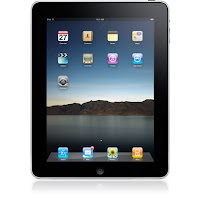A Whole New Mind - Reflections on Dan Pink's book and connections to education
 Image via Wikipedia
Image via WikipediaMr. Pink organizes his book into 6 essential aptitudes, the first of which is Design. I definitely remember the first time I saw the FedEx logo, and I can't not see the arrow anymore. That really opened my eyes to a good design. Pink recommends keeping a design notebook, and writing in it every time you observe both good and bad designs. In my mind, I'm always remarking on how I think things run so efficiently at a Potbelly's and yet not so much so at the local post office. Design in schools is a rapidly growing field as the layout of the classroom, hallways, and common spaces are so influential on the learning that goes on in each of those areas.
Story is the next aptitude, and one of the suggestions involved writing mini-sagas (50 words or less). I could see this as a great activity for any class, getting the students to be concise yet full of detail. This is often used as a way to promote using Twitter into the classroom. Digital storytelling is also a suggestion, and getting more teachers to take advantage of our media center as well as tools such as VoiceThread is going to be a big focus of mine in the upcoming school year.
Drawing (part of Symphony) is another area that meshes well with education. In classrooms, we often see students doodling or we'll find artistic masterpieces in some unlikely places. As a chemistry teacher, I often searched for ways to integrate art into the curriculum, as this often hooked students who might not be so engaged by math and/or science, very much the left brained subjects. Other ideas that Mr. Pink proposes that I really liked include: keeping a metaphor log, looking for solutions in search of problems, and creating an inspiration board. I think that all of these can be applied in the classroom, offering valuable topics for discussion and adding to the overall learning environment.
Empathy, Play, and Meaning were the other three aptitudes discussed at length in the book. However, the first three mentioned above were the ones that impacted me the most, and the ones that I saw some ready made suggestions both for my own life and for the students that we teach.



Comments